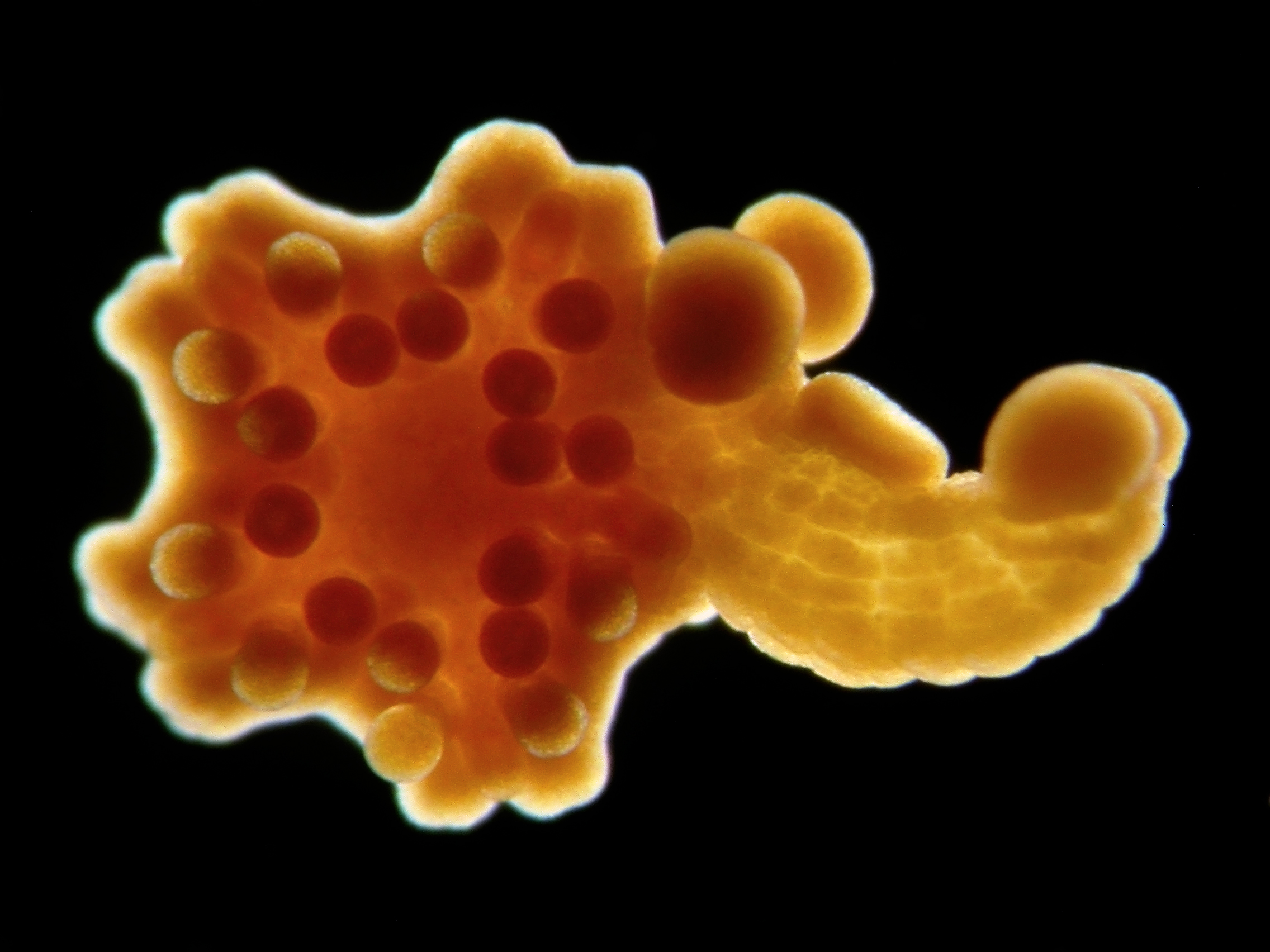A Growing Starfish
Biologists photograph the first days of a fiery orange starfish common to Brazil’s rocky southern shores.

The late-stage larva of a "Echinaster brasiliensis" starfish. The "trunk" protruding to the right is called a larval arm. Image by A. Migotto/Center for Marine Biology, University of São Paulo
While the Echinaster brasiliensis starfish is common along Brazil’s rocky southern shores, little is known about how it forms and grows. To get a better view of the early stages of development, Alvaro Migotto, a biologist at the University of São Paulo in Brazil, and biologist Maria Cecilia Guerrazzi, from Brazil’s Southwest Bahia State University, brought some specimens into the lab where they closely documented starfish development using a digital camera attached to a microscope.

The images show the transition from embryo to very early adulthood, a process that takes about 15 days, says Migotto. The embryo divides until it morphs into a peanut shape, which soon develops adhesive knobs that help it to temporarily attach to surfaces such as algae. At that stage, the budding starfish is a larva that can swim.

After a few more days of growth, “you have a very developed larva, almost a small starfish,” Migotto says. The organism is recognizably stellar in shape, with plump suckers and stubby arms. The big clue that the transition to adulthood isn’t quite complete is one long appendage—what’s called a larval arm, and what Migotto refers to as the starfish’s “trunk” (see the picture above). The sticky extension allows the drifting, diminutive starfish to firmly fasten itself to seaweed and rocks. As they enter adulthood, the larvae reabsorb their larval arms, becoming the fiery orange starbursts familiar to many coastal visitors.

“What was interesting—because it’s a very common species here in Brazil—is that practically nothing about its development was known,” Migotto says. “We were just amazed by the opportunity to describe the life cycle of these animals,” he says. “We were amazed by the beauty of these embryos.”
Emma Bryce is a freelance science writer whose articles have appeared in publications such as The Guardian and Audubon.